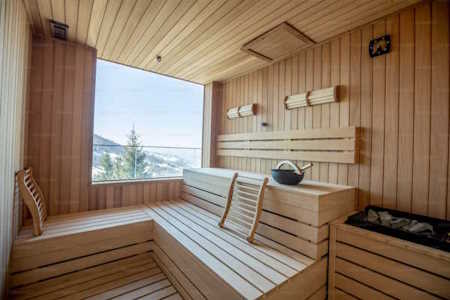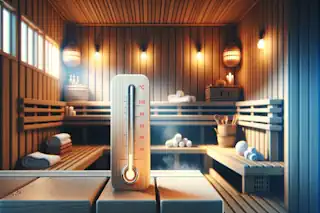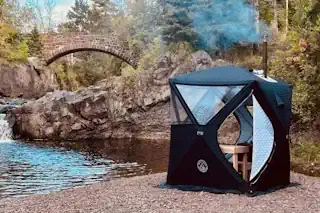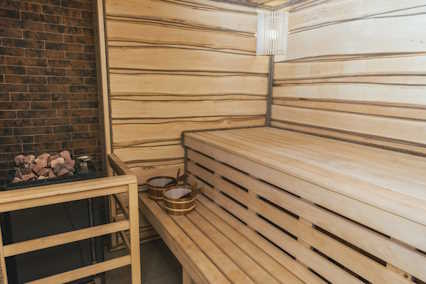A Beginners Guide to Finding Your Zen at Home with a Sauna
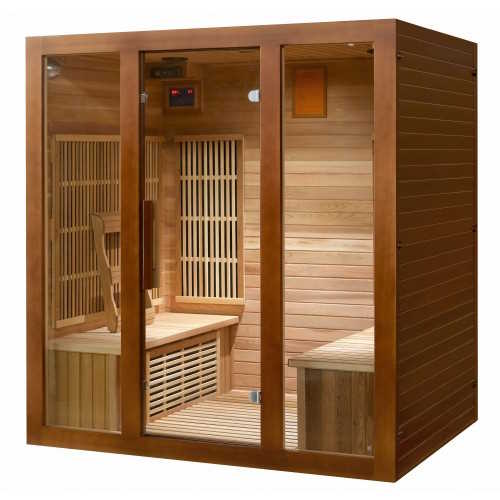
Imagine stepping into a cozy oasis of warmth, feeling the gentle heat seep into your bones, and the steady pulse of the sauna enveloping you in relaxation. It’s a luxury that was once fixed in high-end spas or health clubs, but the modern homeowner is increasingly trading commutes to wellness centers for the blissful convenience of a personal sauna. Whether you’re a health-conscious household or simply someone seeking tranquility at your fingertips, the home sauna trend is ready for you to join in. Here’s everything you need to know about bringing this warmth into your home sweet home.
Types of Home Saunas and Their Unique Benefits
Before you plunge into the sauna scene, it’s essential to understand the varied options and the unique benefits they offer. Traditionally, there have been three primary types of saunas making waves in the wellness community.

Traditional Saunas
The quintessential ‘dry heat’ sauna, these use a stove or heater that warms sauna rocks to produce heat, creating a high-temperature environment with low humidity. The experience can be characterized by a burst of heat when water is poured over the rocks—known as löyly—and a subsequent rise in humidity.
Infrared Sauna
A more recent addition to the sauna family, infrared saunas and full spectrum infrared sauna use infrared lamps to heat the occupant directly, rather than traditional sauna heaters for warming the air. They operate at a lower temperature than traditional saunas but penetrate deep into the body’s tissues, offering a different therapeutic dimension.
Steam Saunas
Also referred to as steam rooms or Turkish baths, these space-age saunas use a steam generator to produce water vapor, which fills the air with 100% humidity. This moist heat promotes perspiration more gently than traditional saunas for longer sessions.
Each variant caters to different preferences and wellness goals. Someone enthusiastic about high-heat, low-humidity environments may lean towards a traditional sauna, while those with therapeutic needs might opt for an infrared sauna. The steam sauna is a comfortable middle ground for those who prefer a milder, more moisturizing heat.
Considerations before You Sauna-ize Your Space
Adding a sauna to your abode is a significant decision, one that warrants careful considerations beyond just the type of sauna you desire.
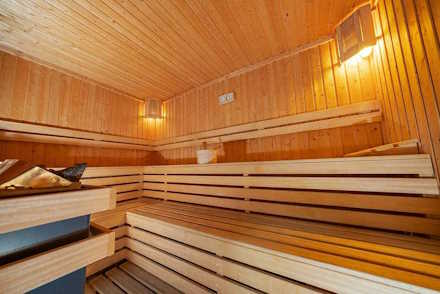
Space and Location
A sauna doesn’t just require space; it requires the right kind of space. Whether it’s a corner in your basement or an extension in your bathroom, the location should allow for proper ventilation and safety precautions. Consider proximity to a shower, changing room and/or a cool down area, as well as existing plumbing and electrical points.
Budget
The cost of a home sauna can range from a few hundred dollars for a compact, portable model to several thousand dollars for a high-quality, custom-built product. You’ll need to decide what’s feasible for your budget and if any home renovations for installation are factored in.
Health and Personal Needs
Saunas offer a myriad of health benefits, from increased circulation to stress reduction. Assessing your personal needs and health concerns can influence the type of sauna you choose and even the routine you follow once it’s installed. Each type is different so make sure you choose the right sauna for you health concerns.
Choosing the Perfect Spot: Attic, Garage, Basement, or Bathroom?
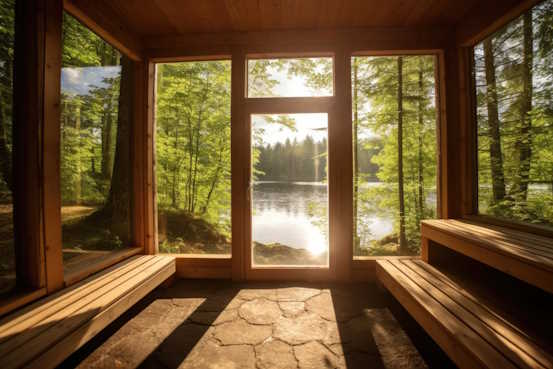
Deciding where to nestle your new sauna sanctuary within your home is a decision that’s both exciting and critical for creating the perfect relaxation retreat. Each potential location has its unique charm and set of considerations.
Attic Saunas
Placing your sauna in the attic can transform an often underused space into a cozy haven. The solitude of the attic is perfect for those seeking peace and quiet. However, ensure that the floor can handle the weight and that insulation is up to par to prevent heat loss.
Garage Saunas
A garage offers ample space, making it an attractive option for larger sauna designs. It’s easier to ventilate and modify for sauna installation due to its separation from the main living areas. The challenge lies in ensuring it remains a warm oasis despite being in a typically cooler, less insulated part of the home. Flooring under and around the home sauna is a more important consideration in a garage space.
Basement Saunas
Basements are a popular choice due to the ease of integrating with existing plumbing and electrical systems, alongside being naturally cooler, which is beneficial for cooling down after a sauna session. The main consideration here is the sauna’s ability to ventilate, as a basement can be prone to dampness and lack natural airflow.
Bathroom Saunas
Incorporating a sauna into your bathroom offers convenience and the luxury of stepping directly from sauna to shower. Space is the primary constraint, making this option more suitable for compact or infrared saunas. The existing moisture-resistant materials in bathrooms also provide an advantage.
In choosing between these locations, consider your home’s layout, your personal convenience, and the technical requirements for installation. Whether it’s transforming the attic into a sky-high escape, leveraging the utility space of a garage, utilizing the foundational seclusion of a basement, or integrating it into the practicality of your bathroom, ensure the space reflects your vision of comfort and relaxation.
DIY Your Dream Sauna: A Step-By-Step Guide
Building your own sauna is a rewarding adventure for the DIY enthusiast who loves a home project. Here’s a rough sketch of what the process would look like:
Materials You’ll Need
Insulation materials
Tongue and groove lumber for walls and ceilings
A sauna heater or infrared emitter (or components for a steam sauna)
A door suited to the heat and humidity levels of your sauna
Furnishings or benches
Lighting and other safety items
Planning the Layout and Design
Think of the ambiance you want to create. Will your sauna be a polished, modern addition to your home gym, or a rustic retreat in your garden? Design it with safety and space utilization in mind. Remember, the right door can make a significant difference in preserving the sauna climate and user safety.
Safety and Installation Tips
Safety should always come first when dealing with heat sources and enclosed spaces. Ensure proper ventilation and consider installing an auxiliary cooler. It’s also crucial to have a professional electrician handle the electrical setup, specifically if you opt for a more powerful heater.
Maintaining Your Home Sauna: A Clean, Green Space
Your sauna is an investment in wellness and should be treated with proper care. Regular cleaning schedules are vital to keep the space free of bacteria and mold.
Cleaning and Maintenance Routines
After each use, wipe down the benches and walls with a mild, antibacterial solution to ensure a clean surface for the next session. Monthly deep-cleans to treat wood and metal against wear and tear might include vinegar solutions or specially formulated sauna cleaning products.
Tips for Energy Efficiency
Energy efficiency can involve simple practices, like keeping the sauna door shut if the sauna isn’t in use, to more complex solutions like installing insulation or reflective barriers.
Top 10 Sauna Models for Home Use
Finding the right home sauna model is a blend of personal taste and requirement. We’ve scoured the market to bring you a curated list of the top 10 saunas for home use.
Here are the top 10 sauna models that cater to various needs and aesthetics for home use:
SereneLife Portable Infrared Home Spa – Ideal for those seeking a portable option, this model is a favorite for its ease of setup and budget-friendly price.
Dynamic “Andora” 2-Person Low EMF Far Infrared Sauna – Perfect for couples, offering low EMF emissions and a luxurious experience.
JNH Lifestyles MG217HB Joyous 2 Person Far Infrared Sauna – Known for its zero-EMF heating panels and high-quality construction, making it a safe and durable choice.
Almost Heaven Saunas Audra – This beautifully crafted barrel sauna fits perfectly in outdoor sauna spaces, offering a classic steam sauna experience.
TheraSauna 2-Person Infrared Health Sauna – Stands out for its patented heating technology that ensures consistent warmth and therapeutic benefits.
Radiant Saunas BSA6310 Rejuvenator Portable Sauna – This portable cabin-style sauna is celebrated for its convenience and effective heat therapy.
Sunray Sequoia 4-Person Infrared Cedar Sauna – Offers spacious luxury with advanced technology for a comprehensive wellness experience.
ALEKO Canadian Hemlock Indoor Wet Dry Sauna – Combines traditional sauna heating with modern design, suitable for indoor use and creating a relaxing wet or dry sauna experience.
Golden Designs Monaco 6-Person Near Zero EMF Far Infrared Sauna – Designed for the whole family, providing a safe low EMF environment and plenty of space.
Maxxus 3 Person Corner Far Infrared Sauna – Designed to fit snugly in a corner, maximizing space efficiency without sacrificing comfort or heat distribution.
Each of these models brings something unique to the table, whether you’re looking for luxury, affordability, portability, or technological advancements in your home wellness setup.
The Warmth of a Sauna at Home
Bringing the sauna experience into your home is more than a home improvement endeavor. It is an investment in your well-being, a testament to the value of self-care and personal space. The rising trend of home saunas signifies a shift towards prioritizing mental and physical wellness. And, finally, it signals a movement back to the basics—the simple joy of a warm space to rest and reset.
Take your time to think through the process, choose a sauna that resonates with your vision, and bask in the radiant glow of your home spa. Whether you’re aching for the soothing warmth from a long day at work or simply in need of some quiet me-time, a home sauna is where your calm respite begins. Your wellness is within reach.
Frequently Asked Questions (FAQs)
Q: Do I need a professional to install my home sauna?
A: While building and installing a home sauna can be a DIY project, certain aspects, particularly electrical installation, should be handled by a professional electrician to ensure safety and adherence to building codes. Power and ventilation
Q: Can saunas help with stress?
A: Absolutely! Sauna sessions are known to relax muscles, soothe aches and pains in muscles and joints, and can greatly reduce stress levels through the release of endorphins. Add an audio system and maybe some chromotherapy lighting to further your relaxation.
Q: How often should I clean my sauna?
A: It is recommended to wipe down the surfaces after each use and perform a more thorough cleaning, including benches and floors, at least once a month to maintain a hygienic environment.
Q: Is it safe for children to use a sauna?
A: Children can use a sauna under adult supervision and with proper safety precautions in place. However, the duration and temperature should be significantly reduced to accommodate their sensitivity to heat.
Q: How energy-efficient is an indoor sauna?
A: Energy efficiency varies by model and type (infrared vs. traditional). Innovations and improvements in sauna technology have made many models energy-efficient, but it is wise to research specific models for their energy ratings.
Q: Can I use a sauna if I have health issues?
A: If you have health concerns, such as cardiovascular diseases, it is crucial to consult with a healthcare provider before using a sauna. Saunas can benefit health in general, but personal conditions and limitations should be considered.
Bringing a sauna into your home opens a tranquil retreat for relaxation and health. We hope these FAQs have helped clear up any questions, allowing you to make a well-informed decision on adding this wellness feature to your lifestyle.
